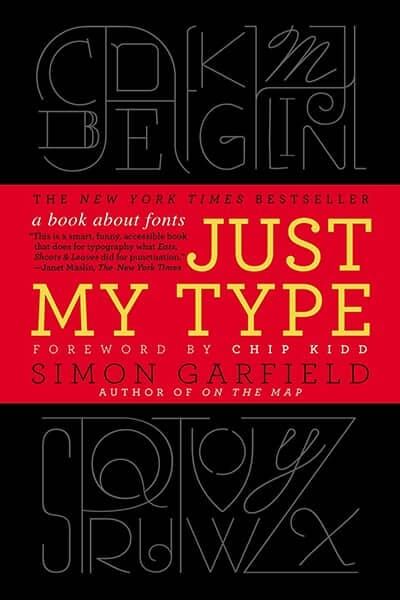Design Thinking Books
Unlock your creative problem-solving potential with these guides to design thinking. Learn about this human-centered approach to innovation that draws from the designer's toolkit to integrate the needs of people, the possibilities of technology, and the requirements for business success. These books offer practical strategies for applying design thinking in various fields.
Design books inspire creativity and innovation across various disciplines, from graphic and industrial design to user experience and architecture. Explore principles of visual communication, color theory, and typography that form the foundation of effective design. Learn about the design thinking process and how it can be applied to solve complex problems in business and society. Discover the latest trends in sustainable design, digital interfaces, and product development. Gain insights into the psychological aspects of design and how it influences human behavior and emotions. Whether you're a professional designer or an enthusiast, these books offer valuable knowledge to enhance your creative skills and design sensibility.



Start Listening to Book Summary
Book Summaries of Top Design Thinking Books →
A Pattern Language Book Summary
"A Pattern Language" introduces a revolutionary approach to architecture and design, emphasizing the harmony of built environments with human needs. The authors present a collection of 253 patterns that provide practical solutions for creating livable spaces, from the scale of a room to entire communities. Each pattern encapsulates observations and wisdom drawn from nature and cultural practices, urging designers to foster deeper connections between people and their surroundings. This book challenges conventional design principles, inviting readers to rethink how spaces influence human interaction and well-being. Dive into a world where every structure tells a story and transforms everyday life into an art form.
An Essay on Typography Book Summary
In 'An Essay on Typography,' Eric Gill explores the art and craft of type design, revealing how typography shapes our perception of written language. Through a blend of philosophical musings and practical insights, Gill argues that type is not just a tool for communication, but an integral aspect of visual culture. He challenges conventional approaches and invites readers to appreciate the aesthetic and ethical implications of typographic choices. This thought-provoking essay raises questions about the role of the designer in society and the impact of typography on our daily lives. Dive into Gill's world to uncover the beauty and power of letters that often goes unnoticed.
A Book Apart: On web typography - Jason Santa Maria Book Summary
In 'A Book Apart: On Web Typography,' Jason Santa Maria unveils the critical art of type on the web, exploring how typefaces can shape user experience. Delve into the interplay between design and readability, and discover how thoughtful typography can enhance digital communication. With practical insights and inspiring examples, Santa Maria challenges conventional wisdom and encourages designers to push the boundaries of creativity. This book is not just a manual; it's an invitation to rethink how we present words online. Whether you're a seasoned designer or a curious newcomer, this exploration of typography will transform your understanding of web aesthetics.
Just My Type Book Summary
In 'Just My Type', Simon Garfield explores the fascinating world of typography and its profound impact on our daily lives. From the iconic fonts that define culture to the hidden messages conveyed through typeface choices, Garfield uncovers the artistry and science behind each letter. Readers are taken on a journey through history, tracing the evolution of fonts and their creators, igniting a newfound appreciation for the words we often overlook. With humor and insight, the book invites us to rethink the way we view text and design. Prepare to look at the printed word in an entirely new light!
The Timeless Way of Building Book Summary
In 'The Timeless Way of Building', Christopher Alexander unveils a revolutionary philosophy of architecture that champions the beauty and organic nature of spaces. He argues that true architecture should resonate with human emotions and the environment, creating a harmonious living experience. Through inspiring examples and a unique pattern language, Alexander illuminates the idea of crafting spaces that feel right. This book is not merely a manual for design but a deep exploration of what makes places and communities thrive. Readers will discover a compelling approach that challenges conventional construction norms and reveals the timeless principles of creating authentic environments.
The Design of Everyday Things Book Summary
In 'The Design of Everyday Things', Don Norman reveals the hidden principles behind effective design that shapes our everyday interactions. He explores the psychological underpinnings of how we perceive and interact with objects, highlighting the importance of usability and user-centered design. Through captivating examples, Norman illustrates how poor design can lead to frustration, while thoughtful design enhances our experience. This book challenges readers to rethink the functionality of everyday items, making them consider the design choices behind the objects they encounter. Ultimately, it invites us to demand better designs that cater to our needs, making the mundane extraordinary.
Don't Make Me Think, Revisited Book Summary
In 'Don't Make Me Think, Revisited', Steve Krug presents a timeless guide to web usability, challenging the notion that users read websites thoroughly. With humor and clarity, he emphasizes the importance of intuitive design, advocating that simplicity trumps complexity. Krug's insights encourage designers to prioritize user experience, making navigation as effortless as possible. Through practical examples and actionable advice, he unveils common pitfalls to avoid. This essential read will transform the way you think about designing websites and engaging users—are you ready to rethink your approach?
The Art of Game Design Book Summary
In 'The Art of Game Design,' Jesse Schell unravels the captivating world of game development, blending theory and practical insights. He presents a unique perspective that gaming is not just a skill but an art form, exploring what truly makes games immersive and memorable. With a combination of engaging anecdotes and hands-on exercises, Schell invites readers to think like designers and embrace creativity. The book serves as a comprehensive guide, making it an essential read for aspiring game creators and enthusiasts alike. Dive into the playful intricacies of design and discover the secrets that could inspire your next game masterpiece!
Showing 8 of 37 books in Design Thinking
View all booksExplore Our Catalogue
Discover a world of knowledge through our extensive collection of book summaries.
Genres
Genres
Genres
Featured Collections
- Top Book Club Picks
- One-Stop Nutrition
- Summer Reads 2024
- Best Beach Reads 2024
- Work-Life Balance Guide
- Time Management
- Healthy Foods
- Entrepreneur Toolkit
- Mind & Body Wellness
- Future Tech Insights
- Leadership Essentials
- Financial Freedom
- Sci-Fi Masterpieces
- Parenting 101
- Books That Became Blockbusters
- Guide to a Healthy Pregnancy






